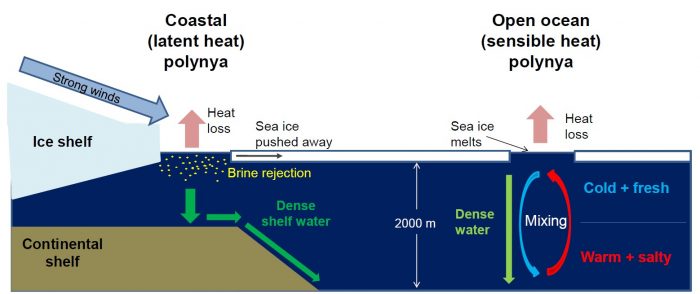
Over the summer, I got excited… the Weddell Polynya was seemingly re-opening! ”The what?” asked my new colleagues. So today, after brief mentions in past posts, it is time to explain what a polynya is.
Put it simply, a polynya, from the Russian word for “ice hole”, is a hole in the sea-ice cover. That means that in the middle of winter, the sea ice locally and naturally opens and reveals the ocean.
There are two types of polynyas
- coastal polynyas, also known as latent heat polynyas, open because strong winds push the sea ice away from the coast.
The ocean being way warmer than the winter-polar night atmosphere, there is a strong heat loss to the atmosphere. New sea ice also forms, rejecting brine (salt) and forming a very cold and salty surface water layer, which is so dense that it sinks to the bottom of the ocean. This type of polynya can close back when the wind stops. - open ocean polynyas, sometimes called sensible heat polynyas, open because the sea ice is locally melted by the ocean. In normal conditions, a cold and fresh layer of water sits above a comparatively warm and salty layer. But mixing can occur which would bring this warm water up, directly in contact with the sea ice, which then melts. Similar to the coastal one, once the polynya has open heat loss and sea ice processes form dense water that will sink. But in this case, the sinking sustains the polynya: it further destabilises the water column, so more warm water has to be mixed up, which prevents sea ice from reforming…
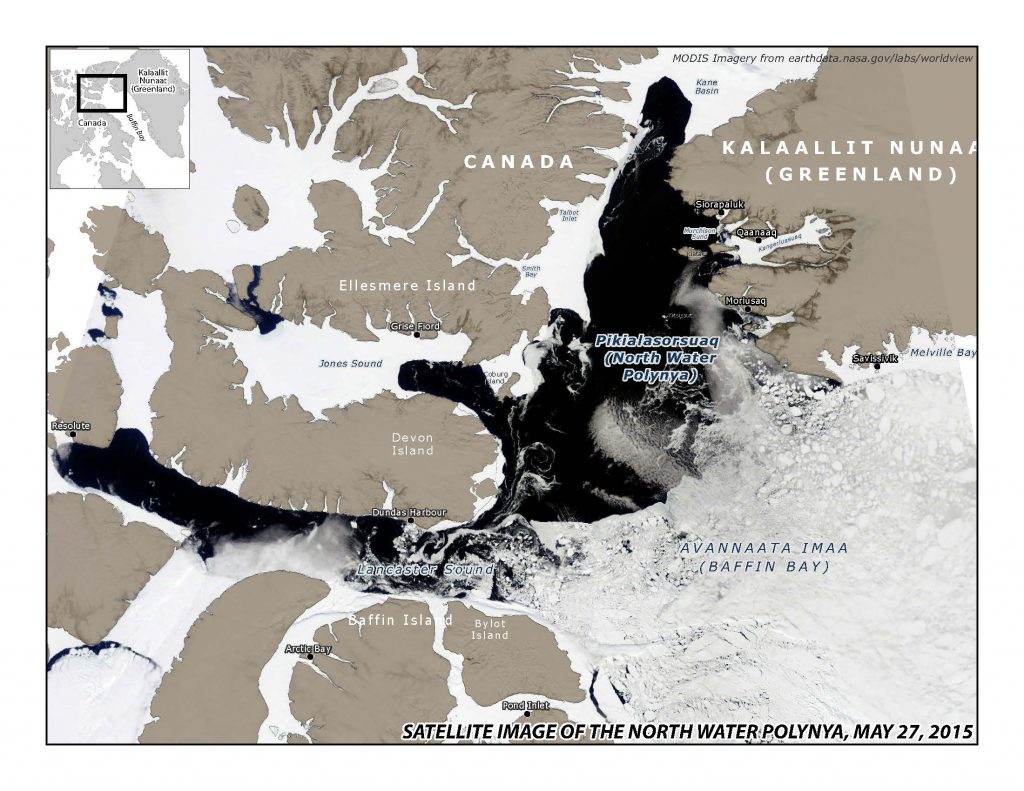
What a polynya looks like, from MODIS satellite: (https://modis.gsfc.nasa.gov/) [Credit: David Fuglestad for Wikimedia Commons]
Some polynyas worth mentioning
- the North Water Polynya, between Greenland and Canada in Baffin Bay, is the largest in the Arctic with 85 000 km2 (Dunbar 1969) and was officially discovered as early as 1616 by William Baffin. In fact, Inuit communities have lived in its vicinity for thousands of years (e.g. Riewe 1991), since this hole in the ice is extremely rich in marine life (e.g. Stirling, 1980).
- Hell Gate Polynya, in the Canadian archipelago which owes its name to a dramatic event… but this is a story for later as today we would like to leave you, reader, with a positive impression about polynyas!
- the Weddell Polynya, in the Weddell Sea, was discovered as we started monitoring sea ice by satellites in the 1970s. It was a huge open ocean polynya, reaching 200-300 000 km2 and lasting three winters (Carsey 1980), and it is so famous because it has not re-opened since. Although this year, the signs are here… it may happen again! It is also my personal favourite because I spent my PhD studying its representation in climate models, which wrongly simulate its opening every winter, for reasons that are still not totally clear…
Polynyas are a fascinating feature of the cryosphere, not least because they occur in the middle of winter in harsh environments and cannot be instrumented easily. They are a key spot where the ocean, the ice and the atmosphere interact directly. Their opening has a large range of consequences from plankton bloom to deep water formation. And we still struggle to represent them in models, so there is lots of work to do for early career scientists!
References and further reading
- Carsey, F. D (1980). “Microwave observation of the Weddell Polynya.” Monthly Weather Review 108.12: 2032-2044.
- Dunbar, M (1969). “The geographical position of the North Water”. Arctic. 22: 438–441. doi:10.14430/arctic3235
- Riewe, R (1991). “Inuit use of the sea ice.” Arctic and Alpine Research 1:3-10. doi:10.2307/1551431
- Smith Jr, W. O., and D. Barber, eds (2007). “Polynyas: Windows to the world”. Vol. 74. Elsevier.
Stirling, I. A. N. (1980). “The biological importance of polynyas in the Canadian Arctic.” Arctic: 303-315, http://www.jstor.org/stable/40509029
Edited by Sophie Berger and Emma Smith

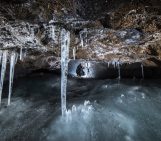
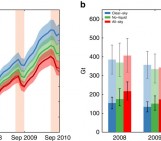
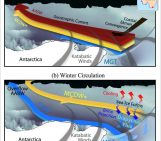
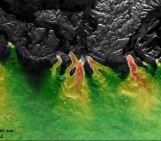
Pingback: Cryospheric Sciences | Image of the Week – A Hole-y Occurrence, the reappearance of the Weddell Polynya
Pingback: Cryospheric Sciences | Image of the Week – Unravelling the mystery of the 2017 Weddell Polynya
Pingback: Cryospheric Sciences | Atmospheric Rivers: A blanket for Antarctic winter sea ice
Pingback: Cryospheric Sciences | Life on the (Ice) Edge: Antarctic Seabirds and Sea Ice